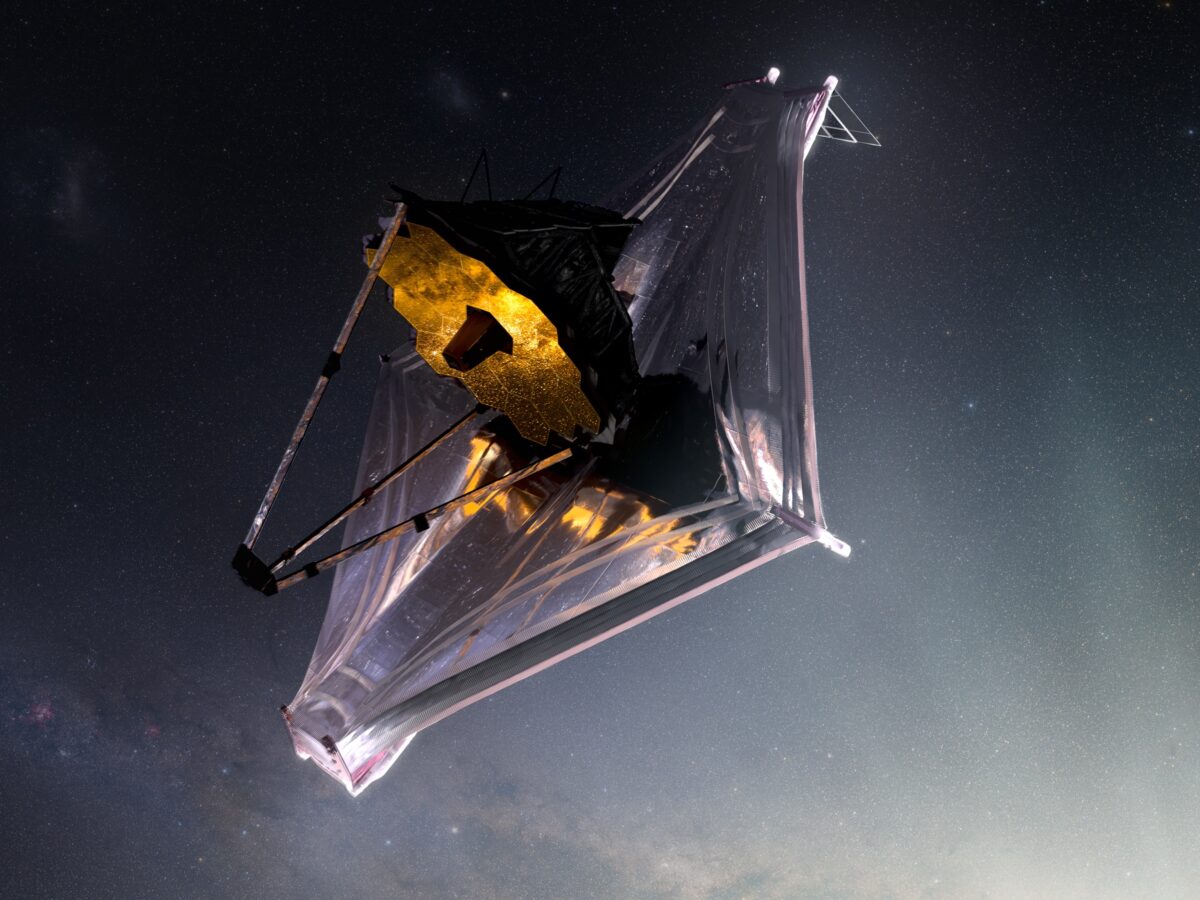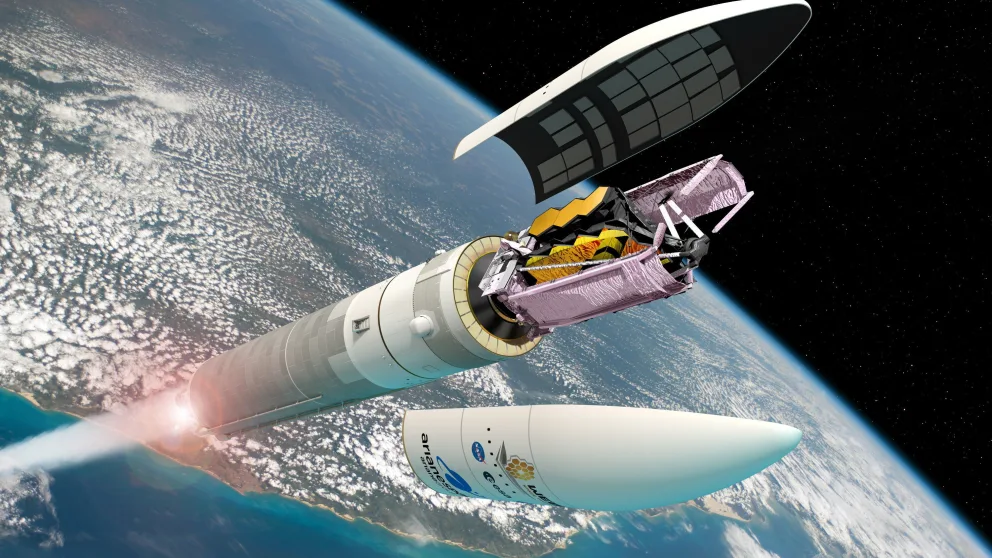Welcome to the James Webb Space Telescope information page, where you will find all necessary information to understand what the JWST is about!
What is the James Webb Space Telescope?
The James Webb Space Telescope (sometimes called JWST or Webb) is an orbiting infrared observatory that will complement and extend the discoveries of the Hubble Space Telescope . The longer wavelengths enable Webb to look much closer to the beginning of time and to hunt for the unobserved formation of the first galaxies, as well as to look inside dust clouds where stars and planetary systems are forming today.

Instruments
Near Infrared Cam (NIRCam)
The Near Infrared Camera (NIRCam) is Webb's primary imager that will cover the infrared wavelength range 0.6 to 5 microns. NIRCam will detect light from: the earliest stars and galaxies in the process of formation, the population of stars in nearby galaxies, as well as young stars in the Milky Way and Kuiper Belt objects. NIRCam is equipped with coronagraphs, instruments that allow astronomers to take pictures of very faint objects around a central bright object, like stellar systems. NIRCam's coronagraphs work by blocking a brighter object's light, making it possible to view the dimmer object nearby - just like shielding the sun from your eyes with an upraised hand can allow you to focus on the view in front of you. With the coronagraphs, astronomers hope to determine the characteristics of planets orbiting nearby stars.
MID-Infrared Instrument (MIRI)
The Mid-Infrared Instrument (MIRI) has both a camera and a spectrograph that sees light in the mid-infrared region of the electromagnetic spectrum, with wavelengths that are longer than our eyes see. MIRI covers the wavelength range of 5 to 28 microns. Its sensitive detectors will allow it to see the redshifted light of distant galaxies, newly forming stars, and faintly visible comets as well as objects in the Kuiper Belt. MIRI's camera will provide wide-field, broadband imaging that will continue the breathtaking astrophotography that has made Hubble so universally admired. The spectrograph will enable medium-resolution spectroscopy, providing new physical details of the distant objects it will observe.
Near InfraRed Spectrograph (NIRSpec)
The Near InfraRed Spectrograph (NIRSpec) will operate over a wavelength range of 0.6 to 5 microns. A spectrograph (also sometimes called a spectrometer) is used to disperse light from an object into a spectrum. Analyzing the spectrum of an object can tell us about its physical properties, including temperature, mass, and chemical composition. The atoms and molecules in the object actually imprint lines on its spectrum that uniquely fingerprint each chemical element present and can reveal a wealth of information about physical conditions in the object. Spectroscopy and spectrometry (the sciences of interpreting these lines) are among the sharpest tools in the shed for exploring the cosmos.
Many of the objects that the Webb will study, such as the first galaxies to form after the Big Bang, are so faint, that the Webb's giant mirror must stare at them for hundreds of hours in order to collect enough light to form a spectrum. In order to study thousands of galaxies during its 5 year mission, the NIRSpec is designed to observe 100 objects simultaneously. The NIRSpec will be the first spectrograph in space that has this remarkable multi-object capability. To make it possible, Goddard scientists and engineers had to invent a new technology microshutter system to control how light enters the NIRSpec.
Fine Guidance Sensor / Near Infrared Imager and Slitless Spectrograph (FGS/NIRISS)
The Fine Guidance Sensor (FGS) allows Webb to point precisely, so that it can obtain high-quality images. The Near Infrared Imager and Slitless Spectrograph part of the FGS/NIRISS will be used to investigate the following science objectives: first light detection, exoplanet detection and characterization, and exoplanet transit spectroscopy.
FGS/NIRISS has a wavelength range of 0.8 to 5.0 microns, and is a specialized instrument with three main modes, each of which addresses a separate wavelength range. FGS is a "guider," which helps point the telescope.

Mission Goals
Search for the first galaxies or luminous objects formed after the Big Bang
Webb will be a powerful time machine with infrared vision that will peer back over 13.5 billion years to see the first stars and galaxies forming out of the darkness of the early universe.
Determine how galaxies evolved from their formation until now
JWST's unprecedented infrared sensitivity will help astronomers to compare the faintest, earliest galaxies to today's grand spirals and ellipticals, helping us to understand how galaxies assemble over billions of years.
Observe the formation of stars from the first stages to the formation of planetary systems
Webb will be able to see right through and into massive clouds of dust that are opaque to visible-light observatories like Hubble, where stars and planetary systems are being born.
Measure the physical and chemical properties of planetary systems, including our own Solar System, and investigate the potential for life in those systems
Webb will tell us more about the atmospheres of extrasolar planets, and perhaps even find the building blocks of life elsewhere in the universe. In addition to other planetary systems, Webb will also study objects within our own Solar System.
